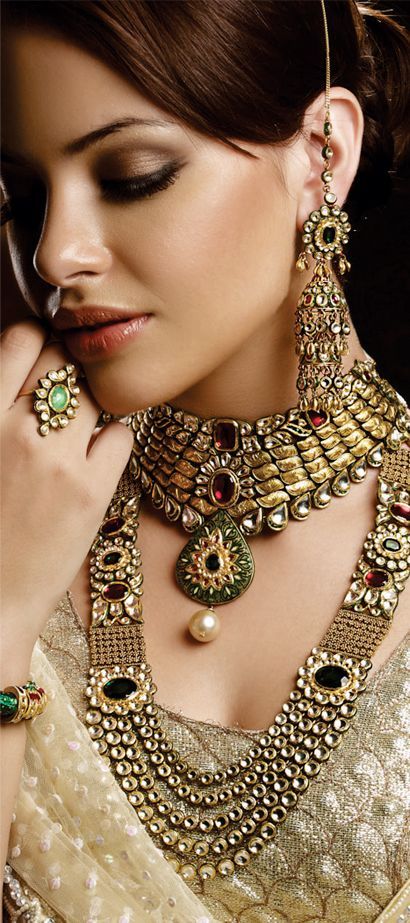Jewelry has been an integral part of human culture for thousands of years, transcending civilizations, continents, and eras. From the gleaming gold ornaments of ancient Egypt to the dazzling diamond creations of modern luxury houses, jewelry has always symbolized beauty, wealth, and personal expression. It is not merely an accessory; it reflects history, tradition, art, and individuality. Jewelry is a form of silent language that speaks of status, emotions, and identity while also carrying deep symbolic meanings in various cultures. The Historical Significance of Jewelry The earliest evidence of jewelry dates back over 100,000 years, when early humans used shells, stones, and bones to adorn themselves. These primitive pieces were more than decoration—they often held spiritual or protective value. In ancient Mesopotamia, Egypt, and Greece, jewelry reflected social hierarchy. Pharaohs and rulers wore crowns, necklaces, and amulets to showcase divine power, while warriors often carried symbolic ornaments for protection in battle. During the Renaissance and medieval periods, jewelry evolved as a reflection of artistry and craftsmanship. Gemstones like rubies, sapphires, and emeralds became central in design, often believed to hold mystical powers. By the 18th and 19th centuries, jewelry had grown into an industry, blending innovation with tradition, and became a way for the middle class to emulate the aristocracy. Types of Jewelry Jewelry comes in countless forms, each holding unique charm and significance. The most common types include: Each type carries its own cultural, personal, and stylistic meaning, making jewelry not just ornamental but deeply symbolic. Materials Used in Jewelry Jewelry owes its allure not only to design but also to the materials from which it is made. Precious metals like gold, silver, and platinum form the base, while gemstones bring color and brilliance. Diamonds remain the most coveted, symbolizing eternity and strength. Colored stones such as rubies (passion), emeralds (prosperity), and sapphires (wisdom) are equally prized. In addition to precious elements, artisans also use pearls, crystals, beads, and even wood or clay in traditional and contemporary designs. In recent years, sustainable jewelry has emerged, using recycled metals and lab-grown stones, catering to eco-conscious buyers while maintaining elegance. Cultural and Symbolic Value Jewelry is more than decoration; it is a cultural storyteller. In Indian culture, bridal jewelry symbolizes purity, prosperity, and marital blessings. In African tribes, beadwork conveys age, marital status, and identity. In Western traditions, engagement rings mark lifelong commitment, while religious jewelry such as crosses or prayer beads reflects faith. Even in modern society, jewelry often represents milestones—birthstones for birthdays, lockets to preserve memories, or heirloom pieces passed down through generations. These items carry emotions and histories, making them priceless beyond material value. Jewelry as an Art Form Beyond symbolism, jewelry is a true art form. Craftsmen invest immense skill in shaping raw materials into intricate designs. Techniques such as engraving, enameling, filigree, and stone setting showcase the creativity and precision of artisans. Iconic jewelry houses like Cartier, Tiffany & Co., and Bulgari have elevated jewelry-making into a blend of tradition, luxury, and innovation. Contemporary designers experiment with bold and unconventional materials, creating wearable sculptures that challenge conventional ideas of adornment. In this sense, jewelry straddles the line between personal accessory and fine art. The Role of Jewelry in Fashion In the world of fashion, jewelry plays a transformative role. It can turn a simple outfit into a statement, reflecting personality and mood. Minimalist chains and studs suit professional elegance, while bold statement necklaces and oversized rings add drama to evening wear. Celebrities, influencers, and fashion icons often use jewelry to create signature looks, setting global trends. Jewelry is also central to seasonal fashion. Spring and summer often highlight colorful gemstone pieces, while winter favors silver and diamond accents. The rise of customized jewelry has further reshaped fashion, allowing individuals to personalize names, initials, or designs, blending uniqueness with elegance. Jewelry in the Modern Era Today, jewelry continues to evolve with technology and social values. The rise of lab-grown diamonds has challenged the dominance of mined stones, offering sustainable and affordable alternatives. Digital platforms have transformed jewelry shopping, making luxury accessible through online boutiques and virtual try-on experiences. Moreover, jewelry is no longer confined to traditional gender roles. Men’s jewelry, from chains and rings to cufflinks and bracelets, has gained prominence, highlighting inclusivity in fashion. Unisex designs now dominate global markets, showing how jewelry is shifting towards universality and freedom of expression. Emotional and Psychological Impact of Jewelry Jewelry has an undeniable emotional power. Wearing a cherished piece often boosts confidence, enhances mood, and creates a sense of identity. An engagement ring may bring joy and belonging, while a family heirloom may carry the comfort of heritage. Jewelry is also tied to celebration—gifts for anniversaries, birthdays, and milestones become lasting reminders of love and connection. Psychologically, jewelry satisfies the human desire for beauty and adornment. It is both a personal indulgence and a social signal, reflecting self-worth, creativity, and values. Conclusion Jewelry is far more than precious metals and sparkling gems—it is history, culture, art, and self-expression woven into wearable form. From ancient amulets to modern designer pieces, jewelry has accompanied humanity on its journey, adapting to changing values and styles while maintaining timeless appeal. Whether a humble bead necklace or a dazzling diamond ring, each piece tells a story, carries a memory, and connects the past with the present. Ultimately, jewelry is not only about how it looks but about what it means. It remains a universal language of beauty, love, tradition, and identity—a timeless treasure that continues to shine across generations.

